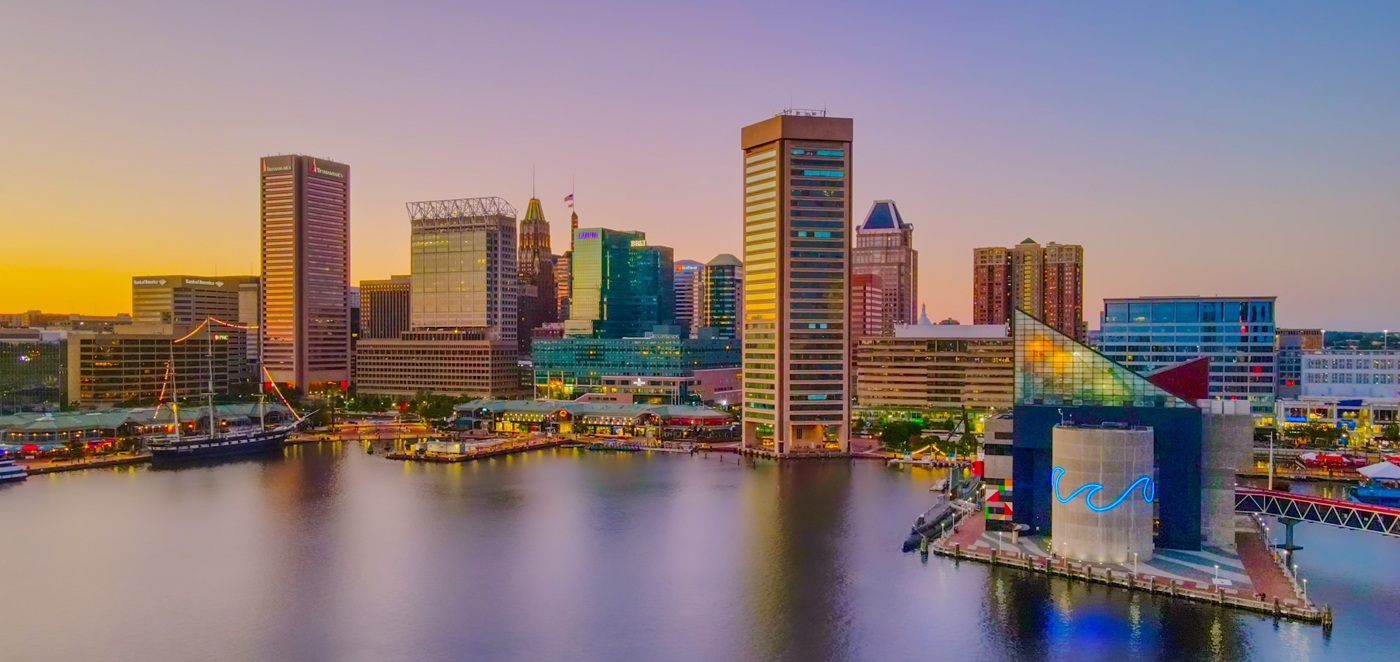Maryland stands out due to its strategic East Coast location and growth-oriented business scene, supported by solid infrastructure and a highly qualified workforce.
In 2022, Maryland was named the richest state in America, having the highest median household income in the United States, which means that local businesses can easily target an affluent customer base. In the CNBC list of best states for business, Maryland gets its best rankings in matters like education, technology, innovation, and workforce.
Additionally, the Old Line state is the most improved US state for business, given that in recent years it has made significant improvements in digital connectivity and in business utilities.
Maryland benefits from proximity to Washington D.C. and to wealthy states like Virginia and Delaware, which facilitates high-level networking and also offers potential access to a wider audience of nearly 17 million people.
The state is known for having a business climate that is supportive of entrepreneurs and small-sized business owners, and has a long tradition of enabling collaboration between the public and the private sector to boost further business and growth opportunities.
In addition to renowned global corporations like Lockheed Martin, Amazon, and Marriott International, Maryland is home to more than 600,000 small businesses, a number that has been increasing year after year even during the economic slowdown of 2020 and 2021.
Some of the most attractive factors for small businesses and startups are the city's leading position in tech and science talent, and the abundance of first-class incubator, research, and accelerator facilities.
Opportunities exist in the state’s key industry sectors, including:
- Life sciences
- Advanced manufacturing
- Cyber security
- Distribution and logistics
- Clean technology
- Data centers
Office Market in Maryland
Office Space in Baltimore
The city of Baltimore has an office inventory of approximately 23 million square feet, nearly half of which is in the CBD. Looking at performance indicators over the past five years, we observe noticeable increases in vacancy rates, which are currently close to 20% and will possibly rise further due to the high number of relocations and move-outs.
Having said that, the best performing assets are trophy buildings in the waterfront area, for which demand remains strong. As things stand, the growing need for high spec space can only be fulfilled through new builds, which are underway in Midtown and southeast Baltimore.
Asking rents have taken two separate trajectories during the past five years. Whereas direct leases have been increasing consistently, sublease rates are back to 2018 levels after declining from a 2019 peak. Average rental rates for direct leases are $27 / psf, exceeding $30s in most sought-after locations, like southeast Baltimore.
Government occupiers are behind the largest CBD deals, but otherwise most transactions range between 5,000 and 15,000 square feet, and are likely to remain in this range, since economic uncertainty and space consolidation are key trends in the short and mid term forecast.
Office Space in Suburban Maryland
Total suburban office inventory in Maryland consists of approximately 63 million square feet. Generally, this is a tenant favorable market, since space has been moving slowly since 2020 and landlord concessions are increasing in order to secure leases.
Vacancy rates average 20%, having experienced slight increases over the last five years.
Average asking rates stand at $32 / psf for both direct leases and subleases.
Other trends worth noting include:
- Increasing amounts of office space being converted for lab or residential purposes, especially in office towers built prior to 2015.
- Growing interest from investors in lab space.
- Life sciences as the key driver of activity, but likely to slow down as interest rates increase.
- Occupancy losses and tenant downsizing leading to rising vacancy rates in the short term.
Retail and Industrial Markets in Maryland
Industrial Space in Baltimore
Major infrastructure investments in the Port of Baltimore and the adoption of logistics 4.0 technology have had a direct impact on the industrial space market.
During the five-year period between 2018-2022, absorption rates exceeded the delivery of new space, although this trend reversed itself in 2022, with the exception of the most active areas (I-95 Corridor and the counties of Howard and Baltimore).
Total market inventory nearly amounts to 230 million square feet, of which approximately 7 million square feet are vacant. Specifically, vacancy rates go from lows of half a percentage point in Baltimore and Carroll counties, to highs of 8% in Cecil County.
Asking rates were steady until 2019 and have trended upwards from that point, reaching 10-year high averages of $8 / psf, with the highest values in Baltimore County East and the lowest in Anne Arundel County.
Leasing activity is expected to remain consistent, while rates are likely to increase due to macro-economic factors.
Tax Breaks, Business Incentives and Support
State and federal agencies in Maryland offer various tax credits and support schemes to local businesses, whether they are new or established. Some programs that may be of interest include:
- Tax credits for the redevelopment of brownfield sites, for investment in local biotech companies, data centers, Enterprise and Opportunity Zones, film industry, and for R&D activities.
- Grants to business projects that involve commercial or industrial development, to help with the costs of international marketing, to support climate action and green jobs goals, and for manufacturing companies that need help with the costs of implementing Industry 4.0 technology.
- Loans to businesses that invest in historically underserved communities, small business facing difficulties accessing needed capital, to help with real estate and construction costs in Priority Funding Areas, and for micro-enterprises in designated areas and small minority-owned businesses.
In addition, several funds provided by the Maryland Technology Development Corporation, including seed funding, helping commercialize innovative research, and venture funds for early stage Maryland businesses.

